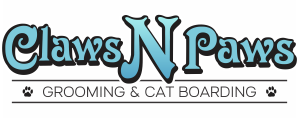 When you know your furry friend well enough, small changes to their appearance can be obvious and upsetting. Your dog’s eyes are no exception. While red eyes are somewhat common among dogs, they may cause concern for you and your family. Knowing the causes of red eyes will bring relief to you and help ensure a healthy recovery for your pet.
When you know your furry friend well enough, small changes to their appearance can be obvious and upsetting. Your dog’s eyes are no exception. While red eyes are somewhat common among dogs, they may cause concern for you and your family. Knowing the causes of red eyes will bring relief to you and help ensure a healthy recovery for your pet.
The Canine Eye
While they may seem tough, dogs are sensitive animals! The canine eye is so sensitive that it requires unique provisions to keep it safe from the environment. Dogs have a third eyelid—called the nictitating membrane—which extends from the inner corner of the eye. This provides extra protection from trauma and other irritants.
Certain breeds are more likely to develop eye problems. These include flat-faced dogs like shih tzus and pugs and dogs with long hair around their eyes such as sheepdogs and poodles. Additionally, older dogs or dogs with preexisting health conditions develop eye problems at a higher rate than young, healthy dogs.
Causes of Red Eyes
There are several reasons why your dog’s eyes might be red. Often, redness is a symptom of trauma or irritation. Check for scratches or foreign objects embedded in the eye or eyelids. Irritation can range from minor to severe. In severe cases, your dog may develop a corneal ulcer. Allergies to food or environmental agents can also cause redness. Has your dog’s diet or lifestyle changed recently?
Certain ocular conditions may cause redness. Like humans, dogs can develop conjunctivitis, commonly known as pink eye. Pink eye is caused by environmental irritants in the air or on surfaces. Alternatively, your dog may have dry eye syndrome, a condition where the tear ducts do not produce enough moisture. Dry eye is accompanied by inflammation and may be indicative of various other health complications.
When to Call the Vet
While eye redness is not necessarily an emergency, it may have a serious underlying cause. Do not wait to schedule an appointment with a trusted veterinarian. Your dog will thank you; eye conditions can cause severe pain and discomfort. With honest and detailed information, your vet will be able to identify a cause and provide a plan for treatment.
Claws N Paws Day Spa in Fountain Valley, California provides professional grooming services to both dogs and cats. Right next door, we provide boarding services in our cats-only boarding facility. Claws N Paws is currently open, with special provisions in place to protect our clients and staff from COVID-19. For more information or to schedule an appointment, call us today at 714-962-1005.

 In the time of COVID-19, we have seen a major increase in hand sanitizer use. Many pet owners have become concerned about the various effects hand sanitizer may have on their pets. With proper sanitation being necessary, it is important to know the truth about hand sanitizer and its ingredients.
In the time of COVID-19, we have seen a major increase in hand sanitizer use. Many pet owners have become concerned about the various effects hand sanitizer may have on their pets. With proper sanitation being necessary, it is important to know the truth about hand sanitizer and its ingredients.


